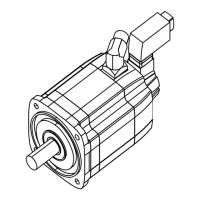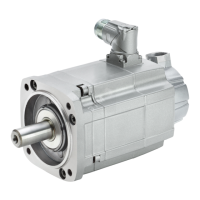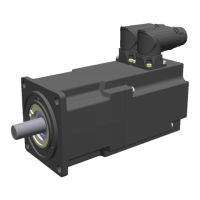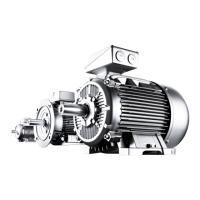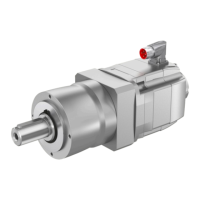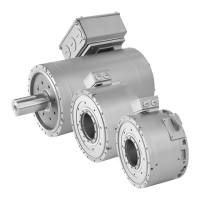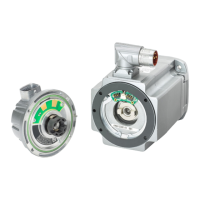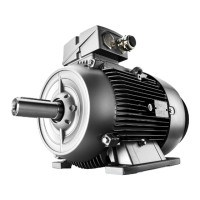Description
3.4 Structure
1FT7 synchronous motors
20 Operating Instructions, 04/2010, 610.40075.40b
Water cooling
The motor can only be operated in a closed cooling-water circuit with a cooling unit. The
motor is connected to the cooling circuit by means of two female threads at the rear of the
motor. The inlet and outlet connections can be freely selected.
Table 3- 5 Technical data relating to water cooling
Cooling water connection G1/4"
1FT706x 3 l/min
1FT708x 4 l/min
Cooling water flow
1FT710x 5 l/min
Max. pressure at inlet Max. 6 bar
1FT706x < 0.3 bar for minimum cooling water flow
1FT708x < 0.3 bar for minimum cooling water flow
Pressure drop between inlet and outlet
1FT710x < 0.25 bar for minimum cooling water flow
Minimum cooling water inlet temperature T
cooling
> T
ambient
- 5 K
Maximum cooling water inlet temperature, without
derating
≤ 30 °C, higher values will cause derating
Only water with an appropriate quantity of additives to protect against corrosion and
minimize the growth of algae can be used as a coolant. Other coolants (e.g. cooling-
lubricating medium, water-oil mixtures with 10% oil and higher) may result in derating.
If there is a risk of frost, preventive measures must be taken during operation, storage, and
transportation (anti-freeze, emptying the cooling circuit and blowing it out with air, etc.). Use
and concentration of the anti-freeze according to information provided by the manufacturer.
Different anti-freeze agents should not be mixed.
A filter (100 µm) must be installed in the inlet pipe to protect the motor against
contamination. Pipes and valves can be made out of brass, stainless steel, or plastic.
However, if different materials are used in close proximity to one another, then the insulation
rating must be taken into account, which is why zinc must not be used in cooling circuits.
If a restrictor is needed to limit the flow of coolant, it is best to install it downstream of the
motor. It must not be installed directly in front of the inlet because the effects of cavitation
may damage the motor.
The values specified for the cooling water correspond to the requirements for a closed
cooling circuit. Not all of the specified concentrations will occur in the cooling water at the
same time.
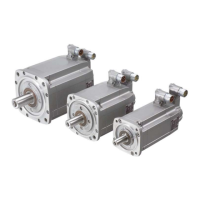
